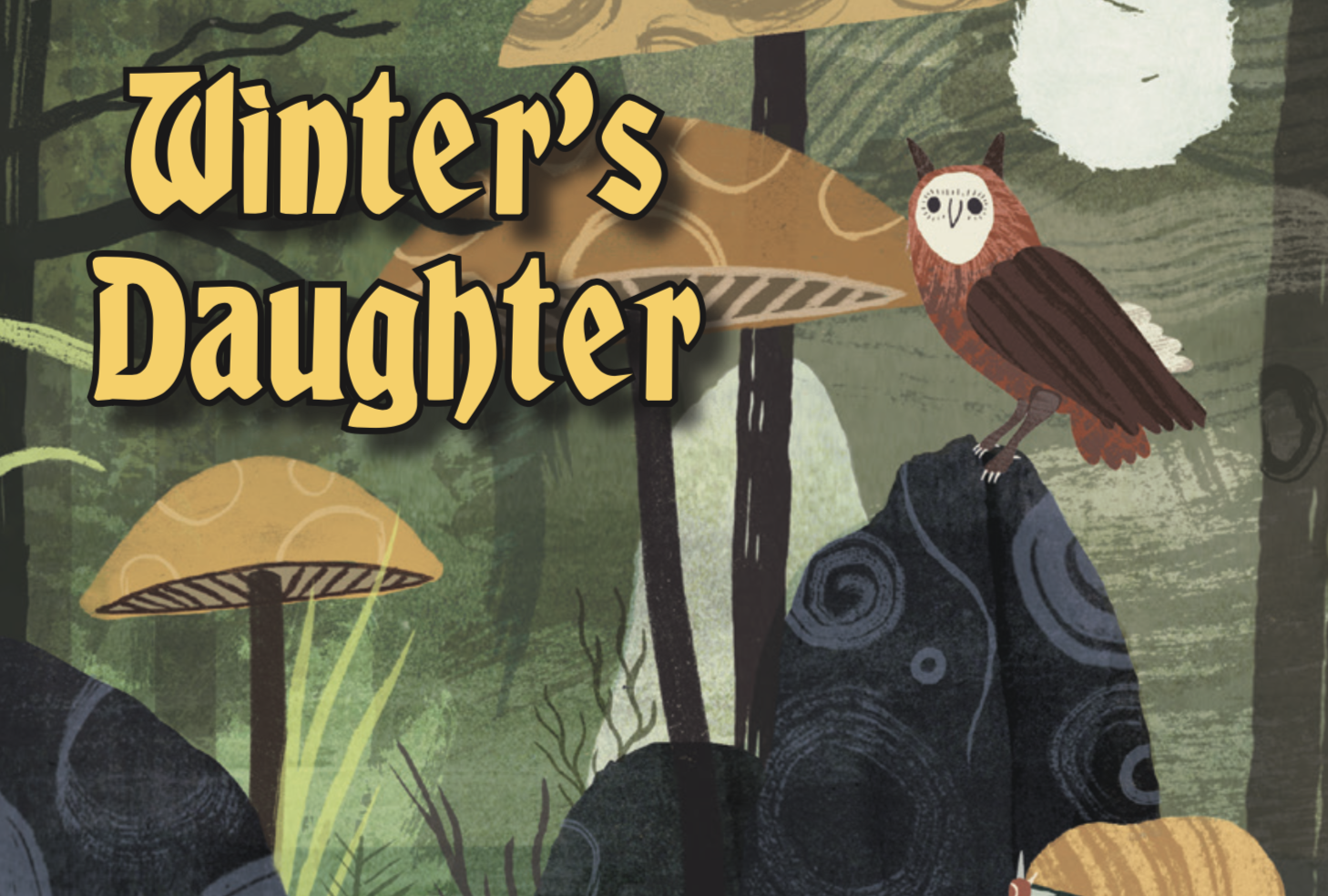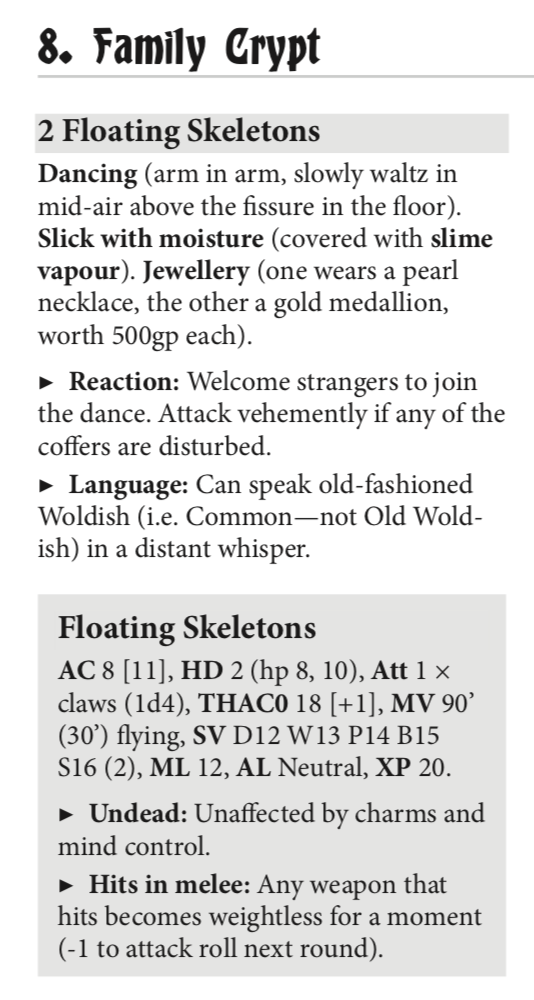Winter's Daughter is Vegemite Icing

This review is a little meandering because I had a weird experience with this adventure. An experience you may not share. TL;DR I REALLY like Winter’s Daughter, and I recommend it with one big caveat.
UPDATE: This adventure was recently updated to remove the following setpeice. Winter’s Daughter is now the perfect adventure. Please enjoy this now pointless blog post.
Some Backstory Permalink
I was born in 1991, a tumultuous time in our nation’s– OH! You want backstory on the adventure? Too bad. You have to learn a little about me first. Sorry.
When I first started running tabletop rpgs I played a knock-off of 4th edition. I would spend 4-5 hours preparing for each session, and then run it for another 4-5 hours. It was like a part time job and I burned out REAL bad.
Then Dungeon World taught me how to stop worrying and skip the prep. These days I spend about an hour organizing my notes and preparing for a 4 hour session. Simple rules and reference sheets help, but what I truly treasure is a well-presented adventure module.
Short descriptions, map cut-aways, page references, short stat blocks, etc etc. I want to be able to skim the adventure and then run it as I go. It’s not worth my time to re-organize it or attack it with a highlighter.
And Winter’s Daughter delivers in spades! The maps are easy to parse at glance. Room descriptions are clever, presenting enough for you to re-gurgitate it to the players. Just look at this:

You Mentioned Vegemite? Permalink
So I bought Winter’s Daughter just for the beautiful art and clean presentation. It promised a classic tale of forbidden love and fairy princes. Sounds like a fun romp!
So I gave it a quick skim, admired the art, enjoyed some of the room descriptions, and set about making tea for my players (soon to arrive!).
We sat down, started playing, and I described the opening scenario of the game.
Click Me To Show Scenario. Trigger Warning: Assisted Suicide.
The group comes across some cultists about to sacrifice a young woman in a dark ritual. The cultists greet the PCs warmly, politely asking for their help with the ritual. The woman is wild-eyed and shaking, but she claims to be a willing sacrifice. This is her moment of glory!
If the PCs help with the ritual then the woman is killed, her blood is collected in a bowl, and the cultists depart peacefully, maybe offering a small reward of thanks.
If the PCs wish to intervene, they must take down these two cultists. They are VERY powerful magic users who don't really want to hurt strangers, but are dedicated to their ritual.
I didn’t realize how strange and…yucky it was until we were halfway through the scene (no prep, remember?). Some things to consider:
- This kind of situation would upset many people, and presumably the player characters as well. If we see someone about to die, we will try to stop it barring other reasons.
- The strength of the cultists makes it HIGHLY unlikely that players could interfere. It is basically a cutscene where something horrible occurs while the characters sit and watch.
- The cultists are peaceful and friendly. They will not initiate combat, and in fact will do their best to avoid a fight; they just want to finish the ritual.
- The ritual is not explained. Maybe it is for a greater purpose, but the adventure doesn’t say.
- The scene has no bearing on the rest of the adventure. None of the persons involved come back as villains, or affect the dungeon in any way.
This starting scenario is vegemite icing on an otherwise delicious cake.
My players decided they would rather sacrifice their lives than simply let this pass. Total party wipe as they threw themselves at the cultist and were all killed.
I love the old-school style of consequences and risks. If players take big risks then they may have to face consequences. Party wipes are always on the table. But this was different. They never really had a choice. Let it happen, or die. That’s not interesting OR engaging.
It’s not a puzzle. It’s not a fight. It’s just kinda…vegemity.
But is it Good? Permalink
YES! The rest of the adventure delivers everything I wanted. Imaginative whimsey, some humor, a desire to re-unite distant lovers, clever puzzles, engaging characters, fun rooms to explore and interact with. It’s a beautiful adventure.
At our table we decided to rewind time and remove the cultists entirely. No ritual, no woman, no custscene. And the next 2-3 hours were a BLAST! We had a great time, explored about half of the dungeon, and are all looking foward to our next session.
I would recommend this adventure to anyone, provided you skip the opening scenario.
Theories and Questions Permalink
I have so many! I guess my first question is: Why? What’s the point of this scene? Obviously the author thought it was important; it’s the FIRST thing that happens, and can’t be avoided without some difficulty.
Is it OSR? In the 5e version of the adventure there’s a little call-out explaining the old-school style. “Particularly if you or your players are new to the old-school style of gaming, it should be noted that not all encounters are made to be “won.” Attacking the drune ritualists has a very high chance of annihilating a low-level party!”
But that doesn’t seem very OSR to me. There’s little that the PCs can do to affect the situation. There isn’t much to interact with. To make this more OSR I would describe the ritual as brimming with magical energy. Maybe the PCs can pretend to help out, and then sabatoge it at the height of power?
Is it a mood-setter? The rest of the adventure doesn’t really gel at all. It’s almost whimsical and light-hearted. Nothing like this. I think this WOULD be a good starter for an adventure of grim realities and grey moralities. But I was promisied whimsy and romance. Blood sacrifice just doesn’t fit.
Is it a setting hook? Maybe in the context of the larger setting this scenario makes perfect sense and ties into a bunch of other hooks and factions in the world. But that doesn’t help me for this adventure.
Does it ruin the adventure? Not at all! In fact, it’s easy to just rip the scene out altogether and no one would ever notice its absence. In fact if you wanted to keep the dark tone, just have a bloody altar with a dead woman on it and footprints circling. “A dark ritual happened here several hours ago…” Boom. Done.
This experience gave me a lot to think about. So I’ll end with this:
Safety Tools and Expectations Permalink
I don’t often use safety tools beyond my Table Rules, and i want to review some of the cool resources available. Maybe you’ll find them useful as well. I stole a lot of the links and descriptions from Big Bad Con’s Guidelines.
X-Card. The X-Card, created by John Stavropoulos, allows anyone (including the GM) to edit out content mid-game, and resolve issues as they arise.
- Place a card with an “X” on it somewhere on the table where everyone can reach it.
- Anyone can tap or hold up the X-Card mid-game, and the group will edit out the scene’s content, no questions asked. That last bit is important. No one needs to defend of explain themselves.
Lines/Veils are boundaries set before play starts.
- A line is a hard limit and indicates the topics we don’t want to explore in our game.
- A veil is a “pan away” or “fade to black” moment. When we veil something, we’re making it a part of the story, but keeping it out of the spotlight. Think of it as a way to still deal with certain themes while avoiding having to describe them in graphic detail.
The Door is Open means that at any time, for any reason, a player can leave the game, and that they will not be judged for doing so. This may be to take a phone call, a bio break, or to leave the game.
Script Change is what we did in this situation.
- “Rewind” backs up a scene to revise the content.
- “Fast Forward” skips over part of a scene.
- “Pause” gives the players a quick breather before continuing the scene without making any changes.